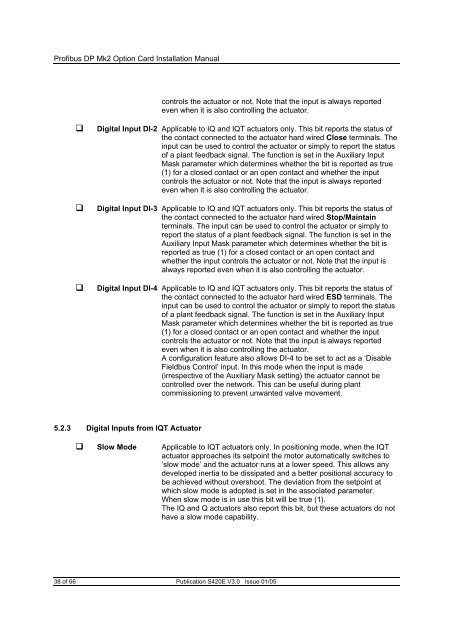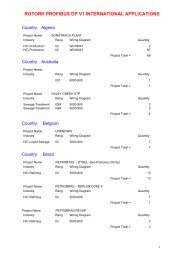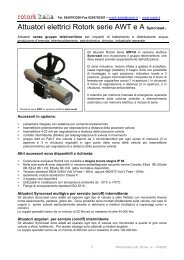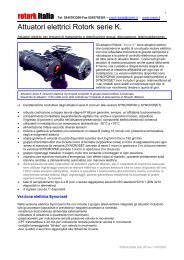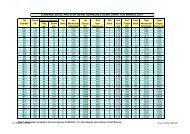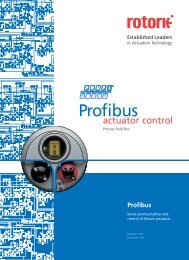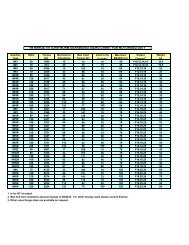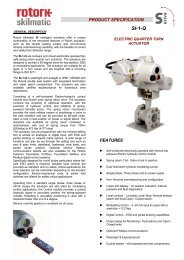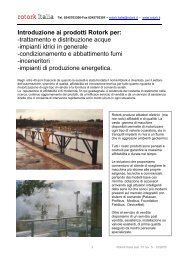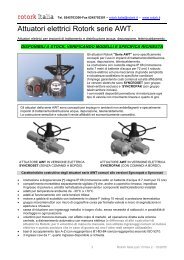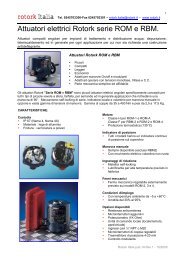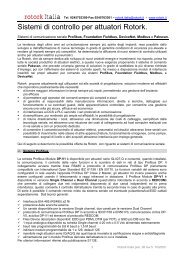Profibus Actuator Control Profibus DP Option Card Installation Manual
Profibus Actuator Control Profibus DP Option Card Installation Manual
Profibus Actuator Control Profibus DP Option Card Installation Manual
- No tags were found...
Create successful ePaper yourself
Turn your PDF publications into a flip-book with our unique Google optimized e-Paper software.
<strong>Profibus</strong> <strong>DP</strong> Mk2 <strong>Option</strong> <strong>Card</strong> <strong>Installation</strong> <strong>Manual</strong><br />
controls the actuator or not. Note that the input is always reported<br />
even when it is also controlling the actuator.<br />
<br />
<br />
<br />
Digital Input DI-2 Applicable to IQ and IQT actuators only. This bit reports the status of<br />
the contact connected to the actuator hard wired Close terminals. The<br />
input can be used to control the actuator or simply to report the status<br />
of a plant feedback signal. The function is set in the Auxiliary Input<br />
Mask parameter which determines whether the bit is reported as true<br />
(1) for a closed contact or an open contact and whether the input<br />
controls the actuator or not. Note that the input is always reported<br />
even when it is also controlling the actuator.<br />
Digital Input DI-3 Applicable to IQ and IQT actuators only. This bit reports the status of<br />
the contact connected to the actuator hard wired Stop/Maintain<br />
terminals. The input can be used to control the actuator or simply to<br />
report the status of a plant feedback signal. The function is set in the<br />
Auxiliary Input Mask parameter which determines whether the bit is<br />
reported as true (1) for a closed contact or an open contact and<br />
whether the input controls the actuator or not. Note that the input is<br />
always reported even when it is also controlling the actuator.<br />
Digital Input DI-4 Applicable to IQ and IQT actuators only. This bit reports the status of<br />
the contact connected to the actuator hard wired ESD terminals. The<br />
input can be used to control the actuator or simply to report the status<br />
of a plant feedback signal. The function is set in the Auxiliary Input<br />
Mask parameter which determines whether the bit is reported as true<br />
(1) for a closed contact or an open contact and whether the input<br />
controls the actuator or not. Note that the input is always reported<br />
even when it is also controlling the actuator.<br />
A configuration feature also allows DI-4 to be set to act as a ‘Disable<br />
Fieldbus <strong>Control</strong>’ input. In this mode when the input is made<br />
(irrespective of the Auxiliary Mask setting) the actuator cannot be<br />
controlled over the network. This can be useful during plant<br />
commissioning to prevent unwanted valve movement.<br />
5.2.3 Digital Inputs from IQT <strong>Actuator</strong><br />
Slow Mode Applicable to IQT actuators only. In positioning mode, when the IQT<br />
actuator approaches its setpoint the motor automatically switches to<br />
‘slow mode’ and the actuator runs at a lower speed. This allows any<br />
developed inertia to be dissipated and a better positional accuracy to<br />
be achieved without overshoot. The deviation from the setpoint at<br />
which slow mode is adopted is set in the associated parameter.<br />
When slow mode is in use this bit will be true (1).<br />
The IQ and Q actuators also report this bit, but these actuators do not<br />
have a slow mode capability.<br />
38 of 66 Publication S420E V3.0 Issue 01/05


